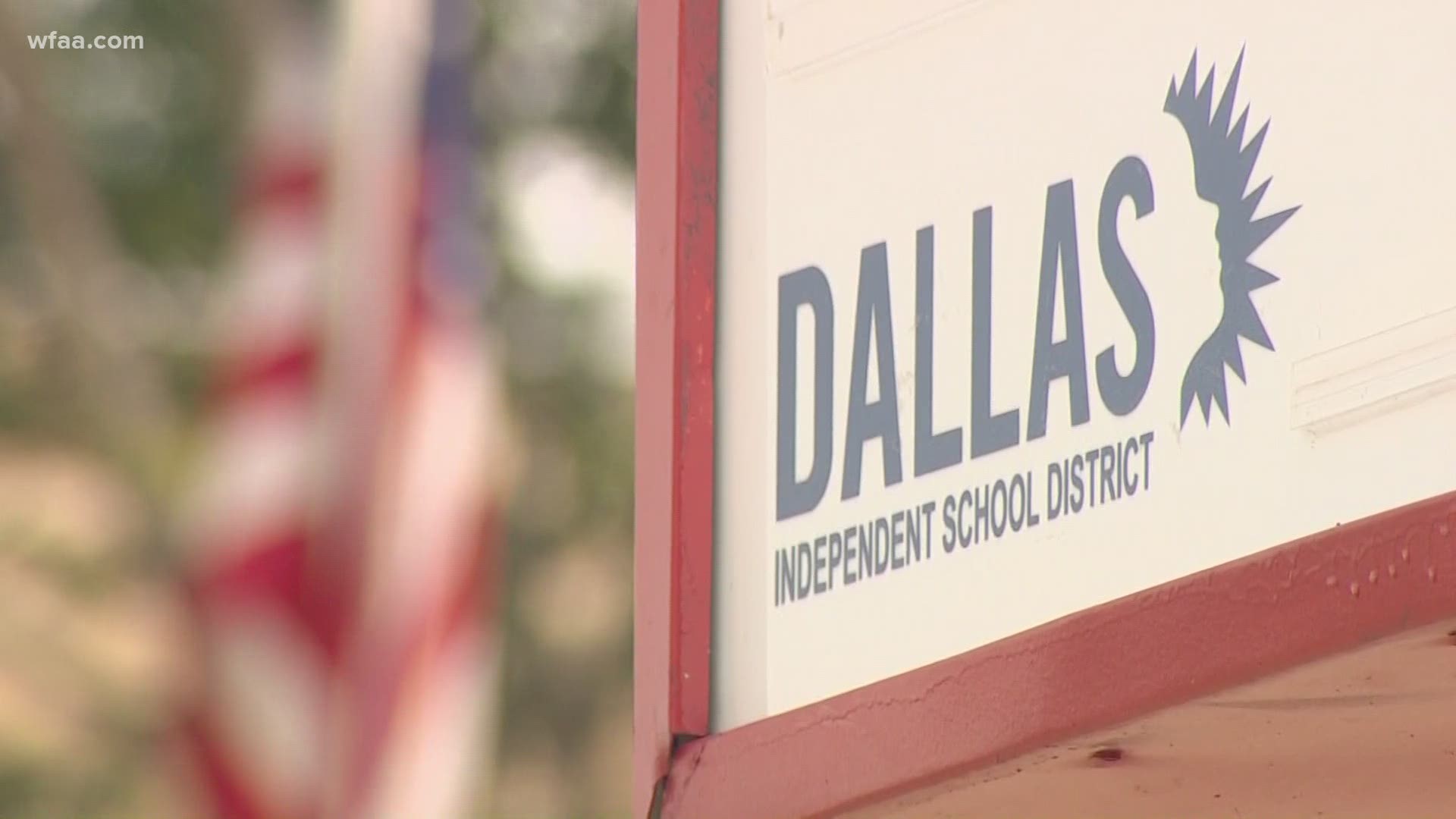As districts look ahead to the fall semester, parents are anxiously awaiting to see what their districts will decide when it comes to in-person learning and online learning.
School leaders have to balance between technology inequity, an unpredictable virus and spending -- along with keeping students and staff safe.
Texas school districts are still waiting to learn whether a federal stimulus package could help their budgets, our media partners the Texas Tribune reported.
In March when schooling went all online, districts were faced with the issue of technology inequity and learned how many of their students were without an internet connection.
In North Texas, many districts stepped up to provide hotspots, laptops, tablets and other technology to better connect students who were in need.
But some smaller, rural counties may not have excess money to spend on technology.
“Districts, where they have a large percentage of kids that don’t have reliable access, obviously can’t plan for large amounts of online curriculum delivery,” said Monty Exter, senior lobbyist for Association of Texas Professional Educators. “During this last semester we saw that they were primarily getting together physical packets to get to students to use.”
Some parents are worried their children have already experienced the “summer slide” since online learning began in March.
“They feel that it’s not equivalent to what kids receiving in a school setting. That's not a dig against districts and teachers, its really just a function of the environment and the engagement [of at-home learning].
“What I have seen in feedback is overwhelmingly an acknowledgment that parents are not thrilled, to say the least, with virtual learning and that environment,” Exter said.
Parents who can't work from home are also at a disadvantage. Dallas ISD Superintendent Dr. Michael Hinojosa mentioned in an April news conference that most parents in the district are hourly, front-line workers who can't work from home.
“That will be the main challenge for all school districts,” said Todd Thorpe, K12 general manager of school services for the central U.S. “Online education is not for everyone, that is one of the barriers for allowing online education.”
There are about 3,000 students in the Dallas-Fort Worth area who are enrolled in two all-online public schools, supported by K12, which partners with school districts Texas Online Preparatory School and Texas Virtual Academy at Hallsville.
Dallas ISD and Fort Worth ISD superintendents have mentioned the idea of a blended school week, meaning some days are in-class learning, while others are online learning.
Thorpe says that model should not be a poor experience if the two work hand-in-hand, such as a science experiment during in-classroom days and independent reading for at-home days.
Fort Worth ISD recently released a survey for stakeholders, including teachers, parents, students, staff, and community members, to give feedback on online learning, the school calendar, and more. The district has plans for an all-online summer school.
"We will continue to provide a virtual summer school so that we can reach more than the 1:11 ration suggested in the governor’s comments," said executive director of communications Clint Bond. "What we have to figure out is whether it is safe for face-to-face for certain students."
On Sunday, Hinojosa told WFAA that he is 75% confident that students will physically go back to school in August.
Dallas ISD is creating a technology framework for district-supported platforms, instructional apps, and content-specific tools.
"The learning management platforms currently include Google Classroom and PowerSchool Learning Management System. Additionally, we are using Vizzle and Seesaw. Our personalized learning schools also use Schoology," said Dallas ISD Director of News and Information Robyn Harris. "A recent survey of parents, students, and staff provided feedback on ways to improve distance learning and that feedback is being incorporated into the plan."
Many districts are looking to larger institutions, like the state or health professionals, for guidance on how to approach reopening and also looking at what makes sense from a scientific/health standpoint, Exter said.
There has been an increase in calls from parents at the K12 call center who want to learn more about switching to all-online, Thorpe said. Many parents are waiting to see what happens with cases and the peak enrollment season for K-12 is in August.
“Parents are mostly concerned about for education of their child is the loss of learning they’ve experienced this spring that will not recapture over the summer and not gaining that back in the fall and next school year,” Thorpe said.
Teachers are missing their students and parents want some semblance of normal, but all eyes are on what happens in the fight against COVID-19 pandemic during the summer.
“Where we are in the fall, I don’t think anybody can know that yet, I don’t think districts can know that yet, I don’t think the TEA or governor can know that yet,” Exter said. “The pandemic has been an ever and rapidly changing situation, while everyone is hopeful that it trends in a positive direction, there’s really no way of knowing that for sure.”
More on WFAA:
- How one school seamlessly transitioned to home learning
- Inside Texas Politics: Dallas ISD superintendent 75% sure students will physically return to school in August
- 'This is a haven': Retired educators tending to Dallas school garden amid coronavirus pandemic
- Changes to North Texas summer camps during coronavirus pandemic: Here's what you need to know


